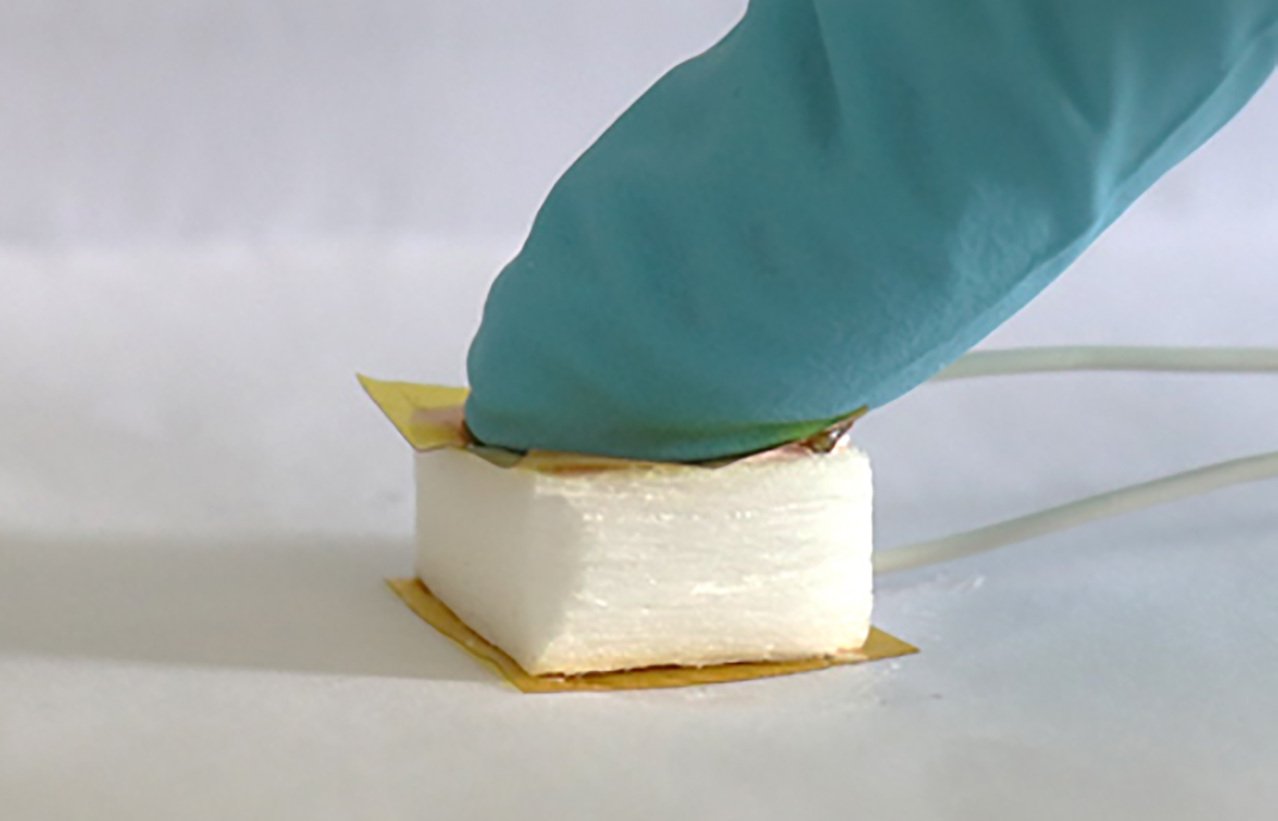
Piezoelectric effect of woody potential for power generation
A study suggests that even a parquet floor could one day supply green electricity: When deformed, wood can generate a usable electrical voltage due to the piezoelectric effect, the scientists report. The results show that the natural strength of the wood degrading fungus can also be used to make the material more flexible for this purpose. As evidenced by performance tests with piezo-wood elements, they can be suitable for use as medical sensors and even for power generation.
Turbine, rotor and dynamo bicycles … In addition to the usual options for generating electrical energy from mechanical processes, there is another interesting alternative: the so-called piezoelectric elements that can convert the energy of deformation into electricity. The pressure changes the positive and negative center of gravity in solids. This results in an electrical potential that can be used to generate energy. Until now, however, this phenomenon has been used mainly in measurement technology: piezoelectric elements can act as mechanical load sensors. In addition to technology, this also offers applied potential in medicine.
Stress due to deformation
However, regular piezo elements consist mostly of lead – zircon – titanate, and are not suitable for use in relation to body tissues due to the lead content. Additionally, getting rid of traditional piezo items is problematic. This is the reason for the demand for biologically and environmentally compatible alternatives. Wood has moved to the focus of the researchers working with Ingo Burgert from Eidgenössische Materialprüfungs- und Forschungsanstalt (Empa) near Zurich. It has long been known that the piezoelectric effect also occurs when this natural solid is subjected to stress. Due to the low deformability of traditional wood, there is only a very low tension that is difficult to use.
To solve this problem, researchers are using a process that can remove the hardness of wood: lignin removal. As they explain, woody cell walls are made of three basic materials: lignin, hemicellulose, and cellulose. “A tree needs lignin above all in order to be able to grow high. This would not have been possible without lignin as a stabilizer that binds cells and prevents tough cellulose fibers from twisting,” explains Burgert. By diluting the lignin, wood can, on the contrary, turn it into a deformable material. And this is exactly what the researchers showed. First, they removed the lignin by soaking balsa wood in a suspension of hydrogen peroxide and acetic acid. The chemicals dissolve the lignin from the material – what remains is a white frame made of the elastic layers of cellulose.
And the “innate attack” makes them resilient
In order to make the concept completely natural, the researchers also found a way to get rid of aggressive chemicals: the biological delignifier is the fungus Ganoderma applanatum, which is known to cause so-called white rot in the wood. “These fungi break down the lignin in the wood very gently,” explains co-author Javier Ribera of Empa. Additionally, the process can be easily controlled in the laboratory, which has proven to be an environmental alternative to chemical processing.
As the researchers report, both treatment methods result in a woody, spongy texture, consisting of superimposed thin layers of cellulose with favorable physical properties: they can simply be pressed together, but then expanded back to their original shape. “With this concept, we make use of the hierarchical structure of wood, without first having to crumble it, as in producing paper, and then having to reconnect the fibers,” explains Burgert.
Electricity from parquet floor?
To demonstrate the potential, the researchers tested cubes with a side length of about 1.5 cm. As they report, the materials showed impressive stability over 600 or so load cycles. Measurements showed that at a pressure of 45 kPa, a voltage of 0.87 V. As the scientists explain, this effect would actually be well suited to use as a sensor. In further experiments, the team then explored the measurement options that would be available for the nanogenerators. For example, if 30 logs are loaded parallel to the weight of an adult, a simple LCD can be made to light up. With further optimization of the system, a functional parquet floor can also be envisioned that converts step energy into electricity. Additionally, the researchers collected preliminary indications that the system is suitable for use as a pressure sensitive sensor on human skin.
Before piezo wood could be used as a sensor or power generator, some development work still needed, which researchers are now devoting themselves to. But according to them, the advantages of such an uncomplicated and at the same time a piezoelectric system are obvious. To adapt the technology for industrial use, the researchers are already in talks with potential cooperation partners, IMPA concludes.
Source: Federal Institute for Material Testing and Research, specialist article: Science Advances, doi: 10.1126 / sciadv.abd9138

“Organizer. Social media geek. General communicator. Bacon scholar. Proud pop culture trailblazer.”
